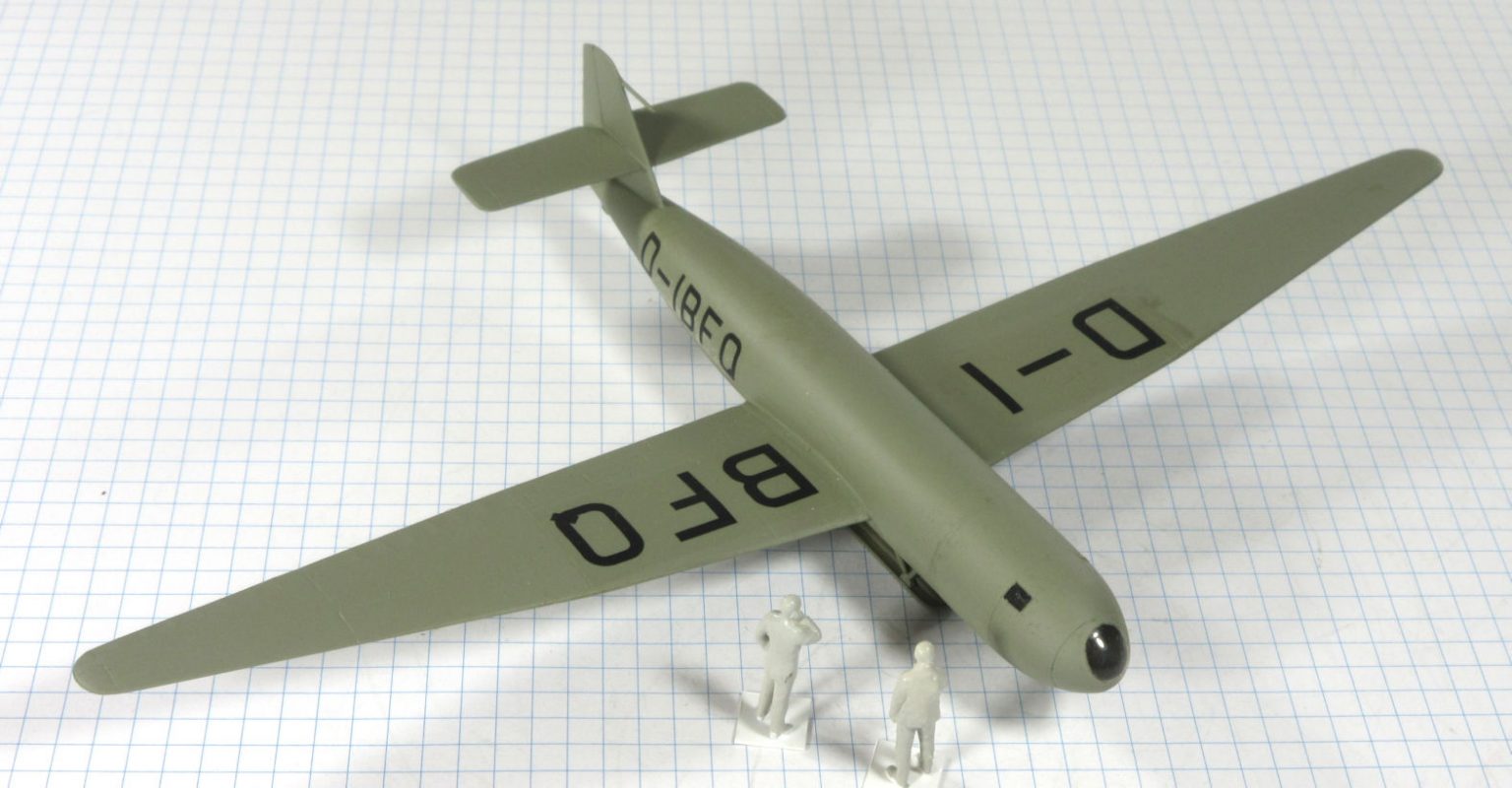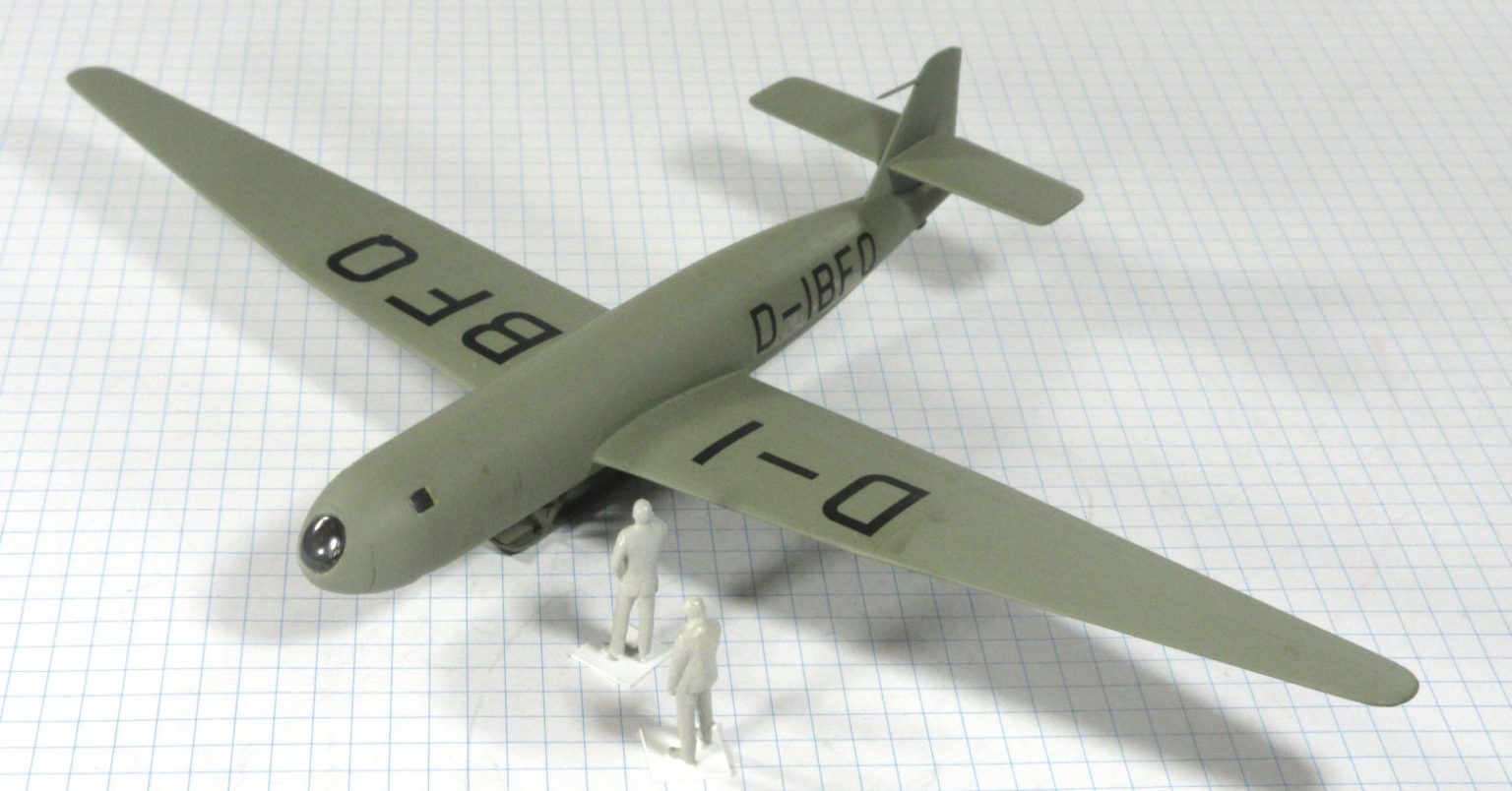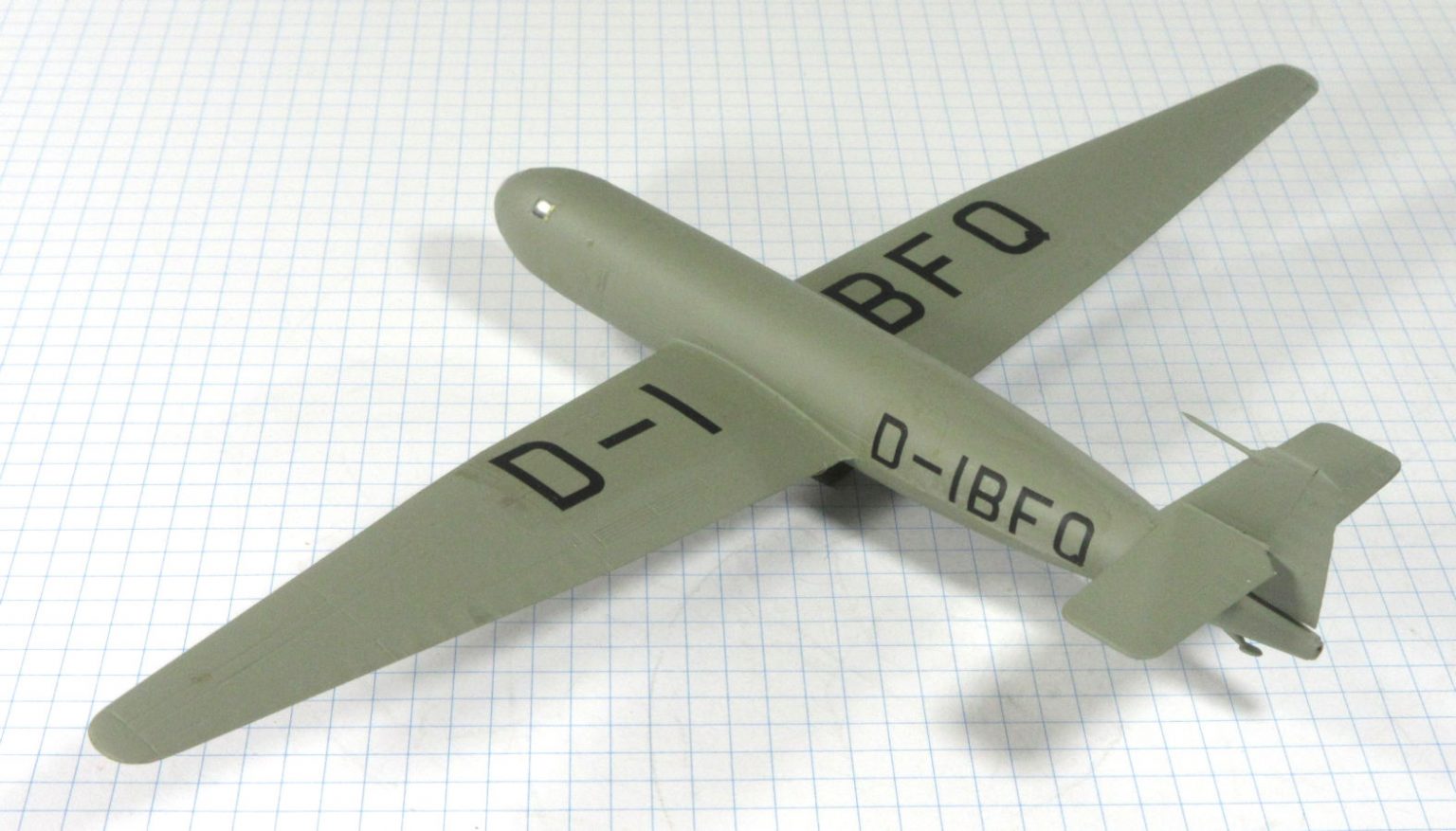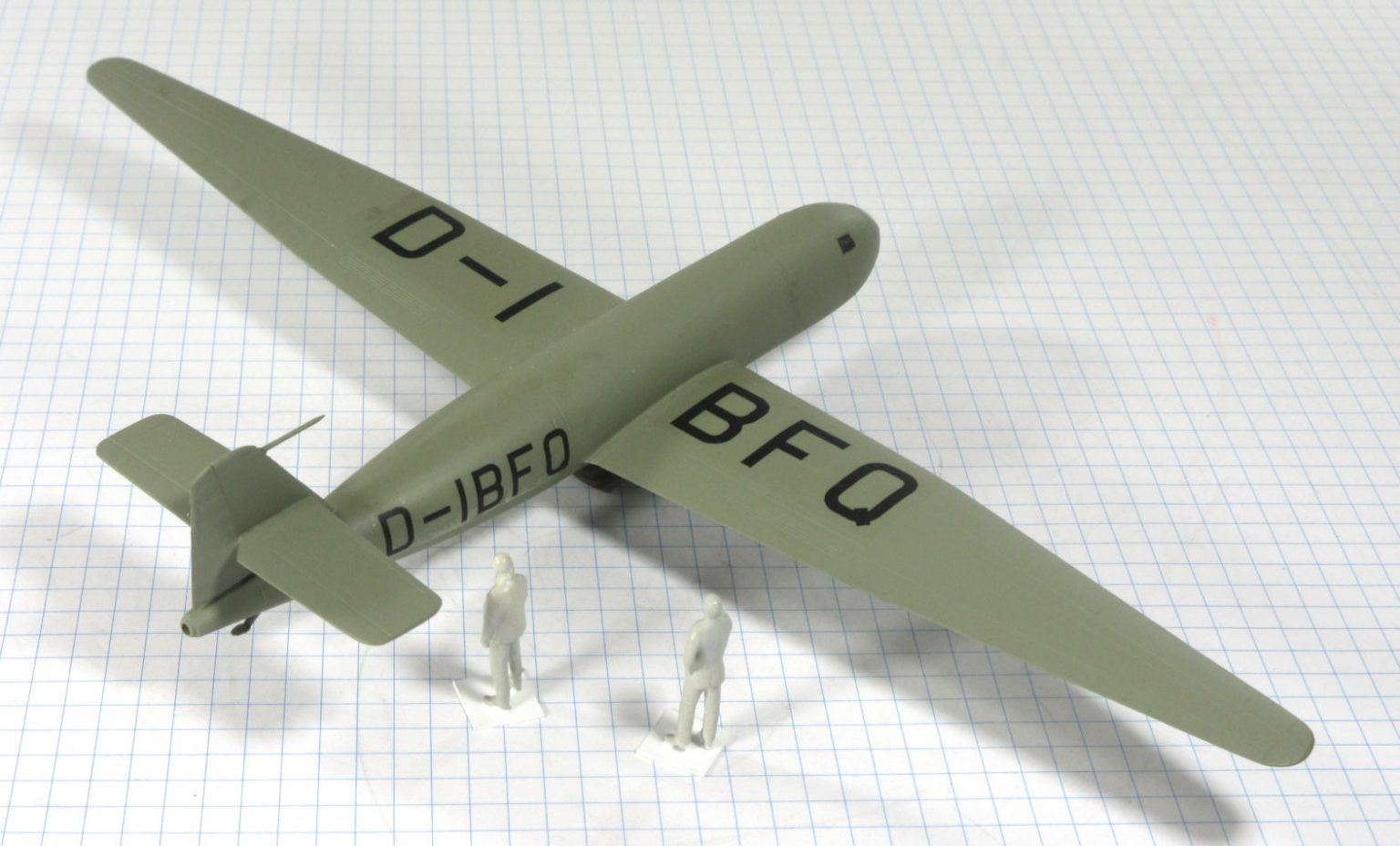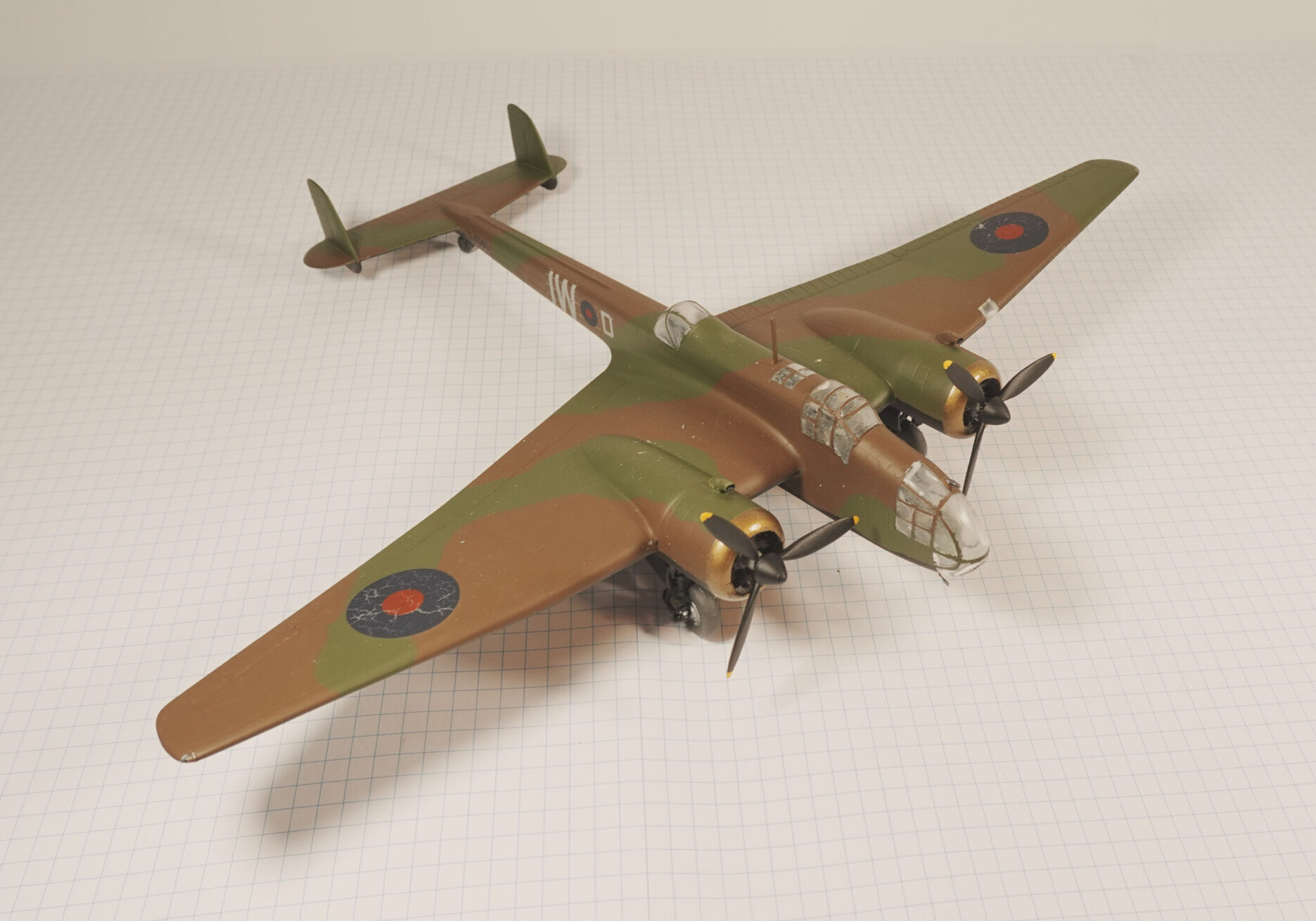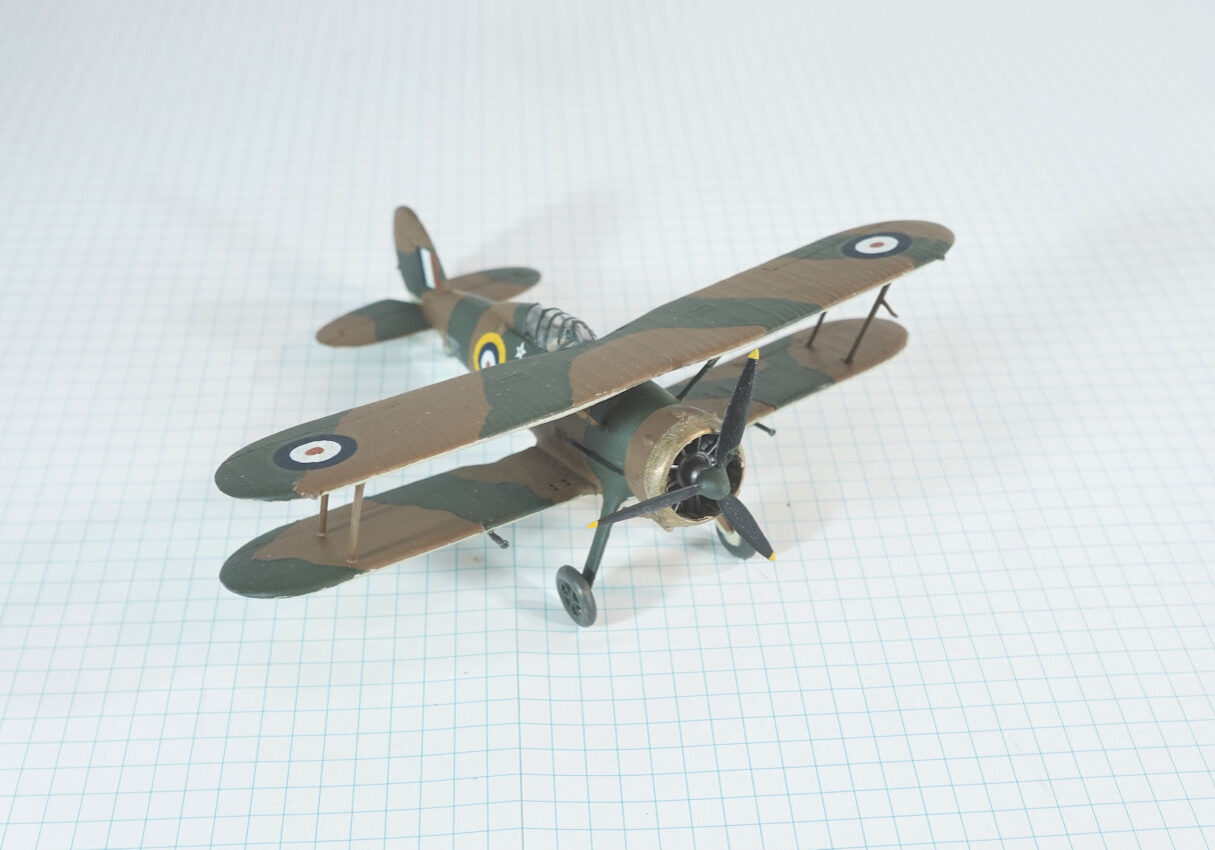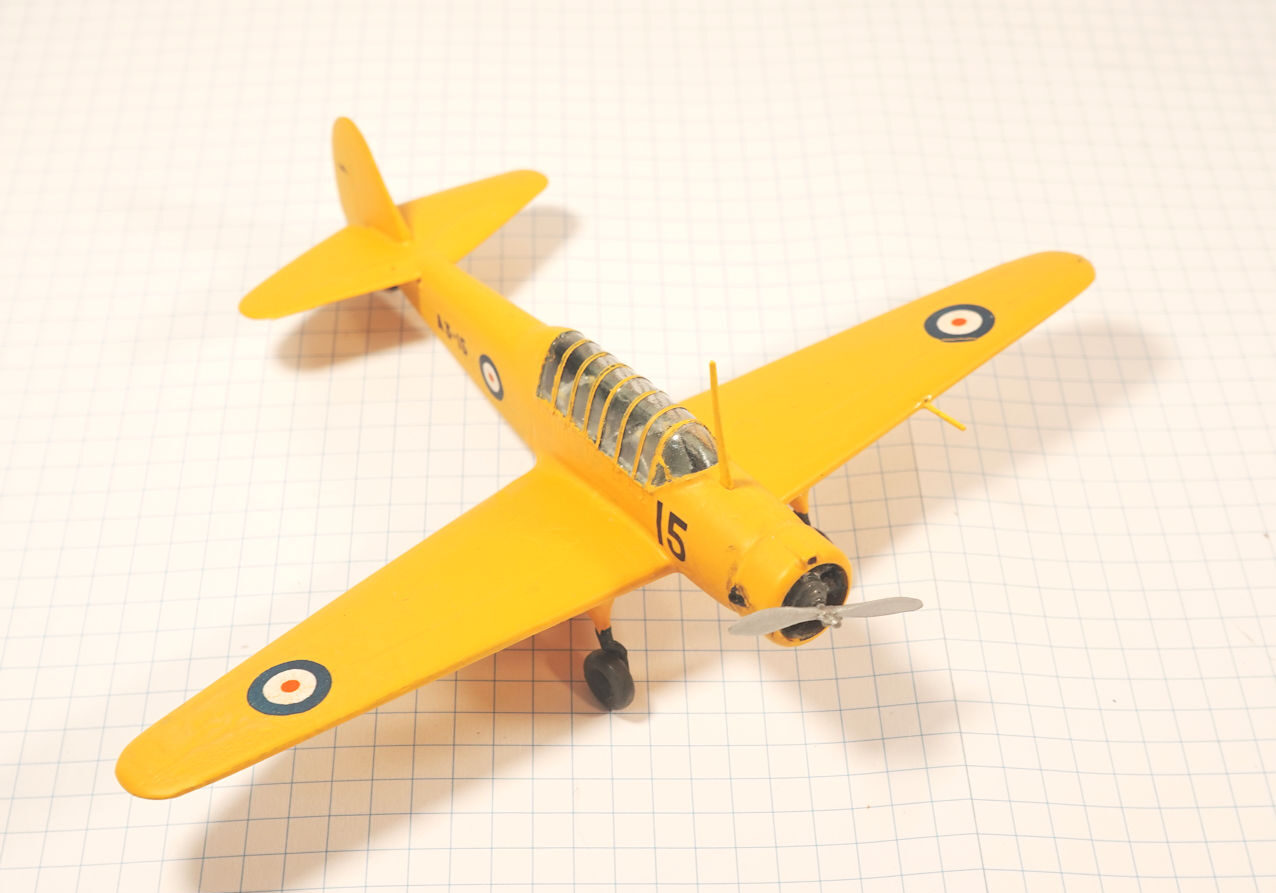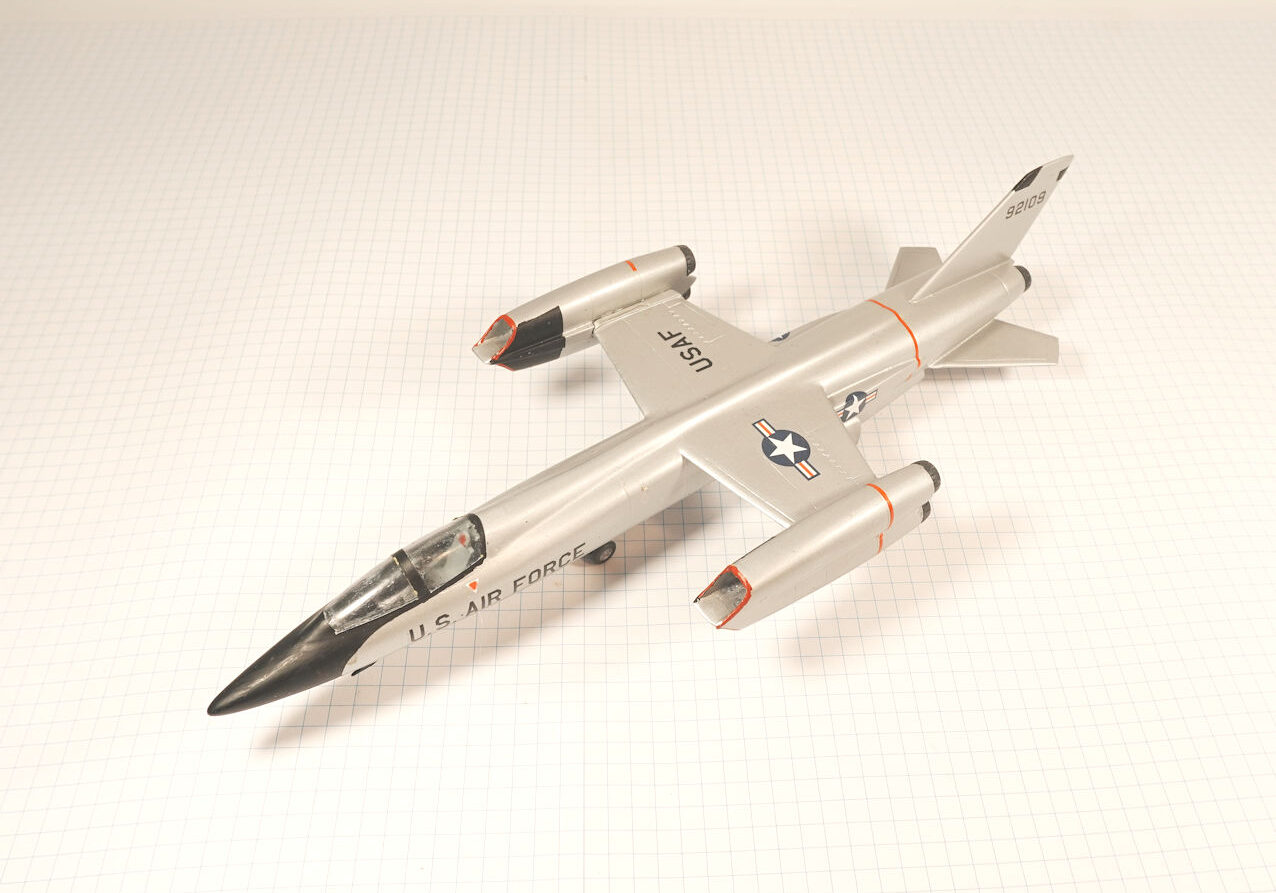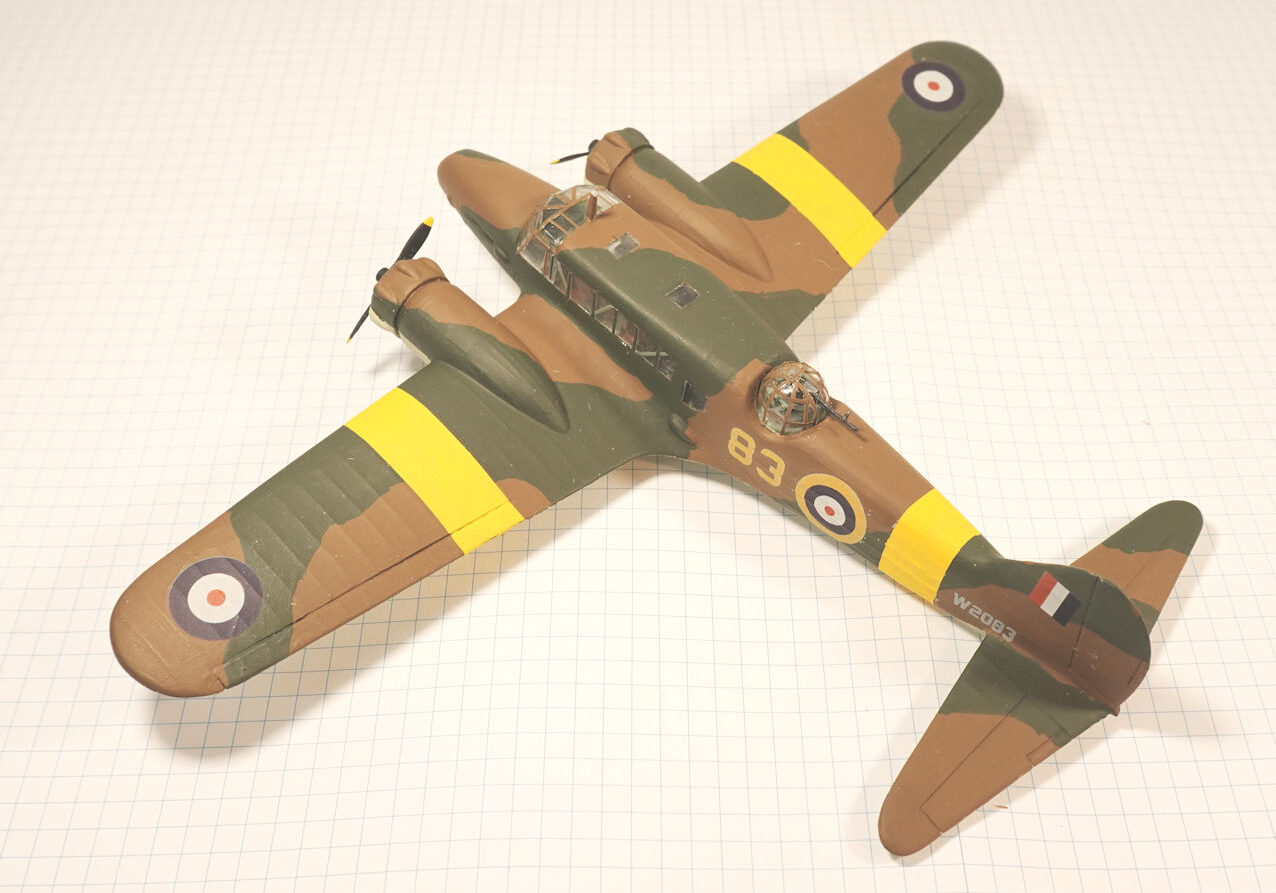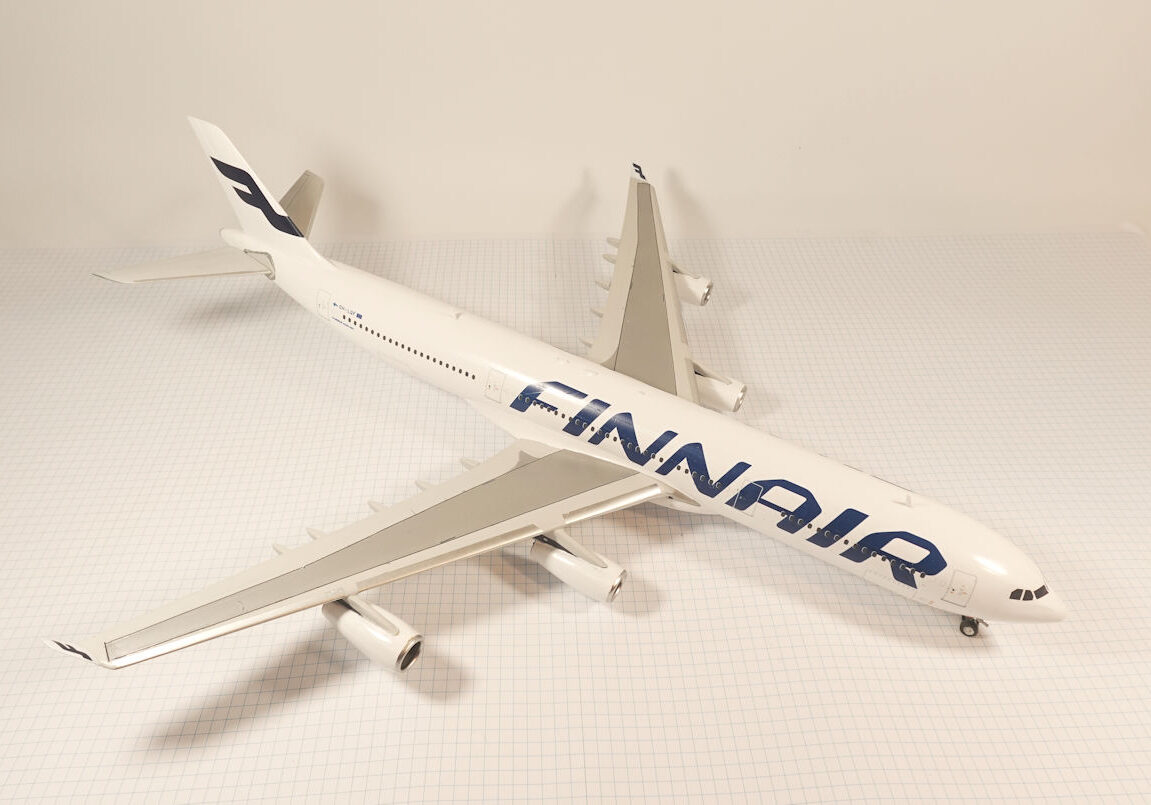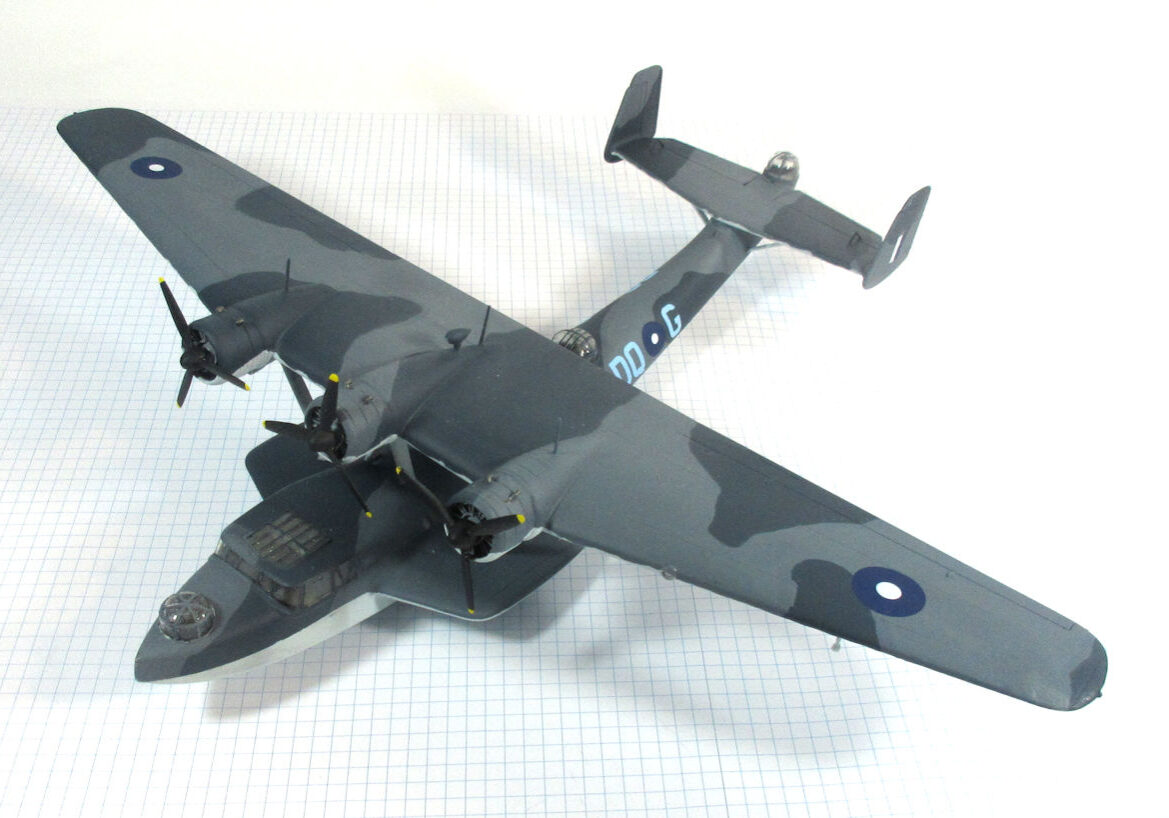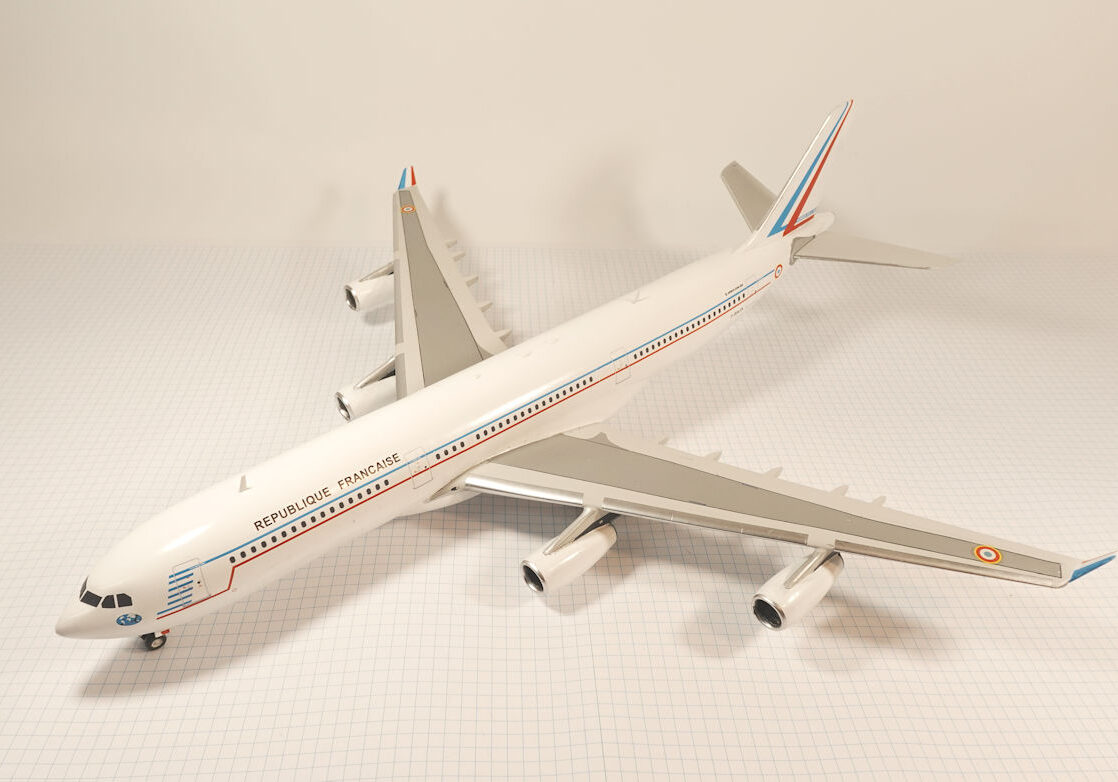History
The DFS 228 was a rocket powered glider designed to fly at very high altitudes over enemy territory on reconnaissance missions. Development began in 1940 but only one had flown by the end of the war in 1945.
In 1940 the German Air Ministry asked DFS (the German Gliding Research Institute) to develop a high altitude reconnaissance aeroplane.
In response DFS proposed a glider that would be carried aloft on a powered aeroplane and then boosted to an altitude of about 25,000 meters by a rocket motor.
The proposal was approved in 1941 but development after that was slow. The most difficult aspect was a pressurised cabin for the pilot and this was not resolved until about 1944.
Flight testing began in late 1944 with the DFS 228 being carried to 10,000 meters before being released.
Forty test flights had been conducted before the end of was in 1945.
This model represent the sole prototype.
Planet 1/72 kit completed by Leigh Edmonds in April 2006.




